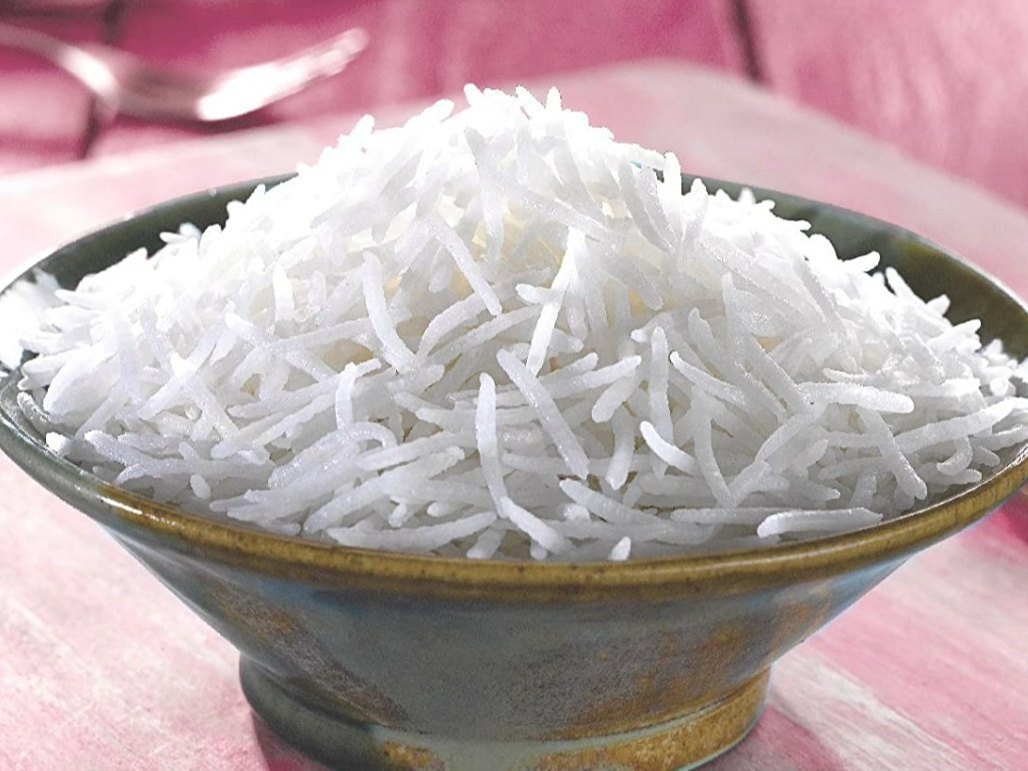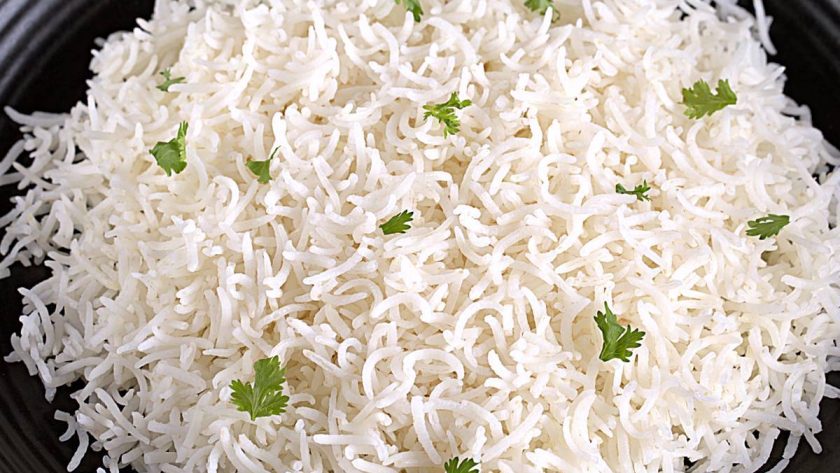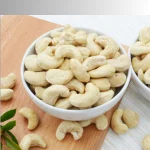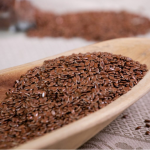If we ask people about their comfort food, 7 out of 10 would definitely answer ‘Rice.’ That’s not us, but what facts say. According to Statista, Americans consumed around 4.6 million metric tons of rice in the 2022/2023 trade year. It is an essential staple that you will find in every US household. And who’s not fond of delicious, earthy, and aromatic dishes made with rice? Not just in the US, rice has been a favorable food option from Japan to South-Asian countries. And when we talk about basmati rice, there’s no other variety that could taste as better and aromatic as it can. Be it about cooking biryani, Matar pulao, or kheer (sweet rice pudding) for your family dinner, basmati rice will definitely find its place on your table.
Basmati rice is an aromatic and long-grained variety of rice that traditionally originated in India. However, it is now grown in various parts of the world, with Pakistan, Sri Lanka, and Nepal giving India good competition in terms of production.
While basmati remains the most preferred variety of rice, here comes a question for you – how do you buy basmati rice? Ask the shopkeeper for it and end up buying it without any second thought. But do you know what variety of basmati rice you have been consuming? There might be a better variety available. We bet you didn’t know it before, but we are delighted to tell you that there are 7 prominent varieties of basmati rice. So, let’s talk about the most popular basmati rice varieties and how they differ. But first, let’s check out how healthy basmati rice can be with the table below:
Nutritional Facts of Basmati Rice
Basmati rice, known for its aromatic aroma, comes in two distinct varieties – brown and white. The brown variant retains its outer bran layer, which is rich in fiber and nutrients, while the white variant undergoes processing to remove the bran. This makes basmati rice a healthier choice due to its remarkable nutritional composition.
The nutrient-rich basmati rice is packed with vitamins, minerals, fiber, carbohydrates, and protein and has a low-fat content, making it an ideal grain for a balanced diet plan.
In addition to these, basmati rice has vital nutrients like copper, zinc, calcium, potassium, magnesium, and vitamins B1, B6, E, K, and pantothenic acids, all of which contribute to its numerous health benefits.
| Nutrition Value: One Cup (163 Grams) Of Cooked White Basmati Rice | |
| Calories | 210 |
| Protein | 4.4 grams |
| Fat | 0.5 grams |
| Carbs | 45.6 grams |
| Fibre | 0.7 grams |
| Sodium | 399 mg |
| Folate | 24% of the Daily Value (DV) |
| Thiamine | 22% of the DV |
| Selenium | 22% of the DV |
| Niacin | 15% of the DV |
| Copper | 12% of the DV |
| Iron | 11% of the DV |
| Vitamin B6 | 9% of the DV |
| Zinc | 7% of the DV |
| Phosphorus | 6% of the DV |
| Magnesium | 5% of the DV |
*Source As Per The USDA
Glycaemic Index Of Basmati Rice:
The Glycaemic Index (GI) is a scale that indicates how rapidly blood sugar levels rise after consuming specific foods. It has been noted that a diet rich in high GI foods can elevate the risk of metabolic diseases such as diabetes, heart disease, and obesity.
While rice is generally classified as a high GI food, the Journal, Critical Reviews in Food Science and Nutrition suggests that the GI of basmati rice falls between 50 and 58. This categorizes it as a medium GI food, making basmati rice a healthier carbohydrate option. Furthermore, the GI of brown basmati rice is even lower, enhancing its health benefits.

Types of Basmati Rice Around the World
There are 27 listed varieties of basmati rice, and if we talk globally, the number will only grow. However, we have curated a list of the top 7 popular and most common varieties of basmati rice.
#1. Punjab Basmati
As the planting season for Basmati rice in Punjab often comes near June, local farmers gear up for the cultivation of this premium variety. The state has witnessed a surge of over 20% in Basmati farming, with regions like Tarn Taran, Gurdaspur, and Amritsar seeing a significant expansion in the land area dedicated to Basmati cultivation. Encouraged by agricultural authorities and exporters, farmers increasingly opt for Basmati due to its lower water requirements than other varieties.
Looking ahead to the next growing season, the Punjab Agricultural University in Ludhiana has developed a new Basmati variant known as Punjab Basmati. This initiative aims to diversify the state’s food resources and conserve its dwindling groundwater reserves.
Unlike the widely grown Pusa Basmati, Punjab Basmati exhibits resistance to all ten bacterial blight pathotypes found in Punjab. It also boasts a robust aroma akin to traditional Basmati varieties, making it a viable option for Basmati growers and other stakeholders.
#2. Haryana Basmati
Moving on to Haryana Basmati, this rice variety is versatile and can be used in a range of Indian dishes, including biryani and pulao. It pairs well with curries and lentil dal.
The lustrous white grains of Haryana Basmati Rice, available in various pack sizes and export grades, are highly valued for their aesthetic appeal. This Haryana-originated Basmati variety notably shows remarkable resistance to stem rot, stem borer, and white back planthopper.
#3. Sugandha Basmati Rice
Sugandha Basmati rice is cultivated in the regions of Punjab, Haryana, Uttar Pradesh, Bihar, and Delhi, where the environmental conditions are optimal. This rice variety is highly sought after in the market due to its captivating aroma, long shelf life, superior quality, taste, and easy digestibility.
It is considered safe for consumption as it is devoid of small stones and dust. Its high fiber content aids in maintaining a healthy digestive system and helps prevent constipation. Sugandha Basmati rice is available in various packaging options for customers to choose from. Even after cooking, it remains fluffy and non-sticky.
#4. Kasturi Basmati
Kasturi Basmati rice, known for its medium-sized grains, aroma, and delicious taste, is usually grown in Uttarakhand. It is grown at an altitude of 400–600 meters above sea level. This rice variety is rich in soluble fiber and carbohydrates and has the lowest glycemic index among all rice types.
While basmati rice in India is considered one of the healthiest food items, Kasturi basmati stands out with a lower glycemic index, making it beneficial for weight loss. Besides being healthy, it is also flavorful and aromatic. The size of its grains is medium, unlike the traditional basmati rice grains, which are longer.
#5. Pusa Basmati
The Pusa Basmati Rice, a hybrid semi-dwarf variant, shares many similarities with traditional Basmati rice, with the primary distinction being the grain’s length. This variety was cultivated by the Indian Agriculture Research Institute in Delhi with the aim of providing farmers with greater yields and offering Basmati rice enthusiasts a more affordable alternative.
The Pusa Basmati Rice matures earlier than regular Basmati rice and has a higher average yield. It is the only semi-dwarf Indian rice plant that belongs to a unique agricultural science category. Except for a slight reduction in grain length, the Pusa Basmati Rice retains all the features of Basmati Rice, including its aroma, nutritional content, non-stickiness, and taste.
6. Cream Sela Basmati Rice
Cream Sela Basmati Rice is a pale-colored, parboiled version of the 1121 Extra Long Grain Basmati rice. The cooking process and final product differentiate Creamy Sella Basmati Rice from the 1121 Extra Long Grain Basmati rice. Sela rice typically takes longer to cook than Basmati rice but is easier to prepare.
Once cooked, Cream Sella Basmati rice is harder than the 1121 variety, and the grains remain separate. This variety, also known as Maharani sela rice, is often preferred by restaurants because it is easier to manage during cooking, and the grains do not stick together. Apna Sela Rice is another popular type of cream sela rice.
7. Golden Sella Basmati Rice
Golden Sella is a yellowish variant of extra-long-grain Basmati rice. It is parboiled with its natural brown husk intact and then dehusked, giving it a yellow hue. The parboiling of the rice’s husk allows for greater nutrient absorption, making the rice more nutritious. Golden Sella basmati rice produces fluffy, strong, and separate grains when cooked.
This rice variety undergoes a steam treatment before milling, which helps to preserve the rice’s nutritional content and gives it a firm texture. Sella Basmati rice is often used in the preparation of biryanis and other rice dishes that require a firmer texture.

Health Benefits Of Basmati Rice
Basmati rice has way more health benefits than regular rice varieties. Here are some prominent ones:
Diabetes Management
Despite being calorie-dense and rich in carbohydrates, Basmati rice is packed with vital nutrients and dietary fiber that aid in slowing down digestion. This helps in regulating blood sugar levels, making Basmati rice a suitable grain for diabetics.
According to the Canadian Diabetes Association, Basmati rice has a lower glycaemic index compared to other rice types, which is crucial for individuals with diabetes. The significant amount of fiber, amylase, and protein in Basmati rice contributes to its low glycaemic index, helping to maintain stable blood sugar levels.
Heart Health
Basmati rice, being low in saturated fats and sodium, is a healthier choice for those with heart conditions. Its high dietary fiber and vitamin B content help to increase good cholesterol (HDL) levels and decrease bad cholesterol.
This helps prevent the accumulation of fatty deposits in the heart’s vessels, promoting the functioning of the heart muscle and enhancing heart health.
Cancer Prevention
Basmati rice is rich in dietary fiber, containing 20% more fiber than many other cereals. These fibers can inhibit the development of cancer cells. A diet high in fiber helps regulate bowel movements, adds bulk to the stool, and facilitates the smooth transit of food and other substances within the gastrointestinal tract.
Consuming whole-grain brown Basmati rice, in particular, can help prevent breast cancer as the fibers assist in maintaining hormonal balance.
Weight Management
Contrary to popular belief, a diet rich in rice is not necessarily detrimental to weight loss. In fact, Basmati rice can significantly aid in weight reduction. Its high natural dietary fiber content slows digestion, keeps you feeling full for longer, and curbs unnecessary food cravings.
Additionally, it contains a high amount of amylose, a type of carbohydrate that is difficult for the body to digest, thereby promoting weight loss.
Blood Pressure Regulation
Basmati rice is abundant in magnesium and potassium, which significantly aid in reducing blood pressure.
Potassium, in particular, helps relax blood vessels, improving circulation and blood flow to essential organs. Regular consumption of Basmati rice can be greatly beneficial for individuals with high blood pressure.
Digestive Health
Being rich in soluble fiber, Basmati rice provides the body with sufficient roughage, promoting the smooth functioning of the digestive system. A high-fiber diet helps prevent constipation by adding bulk to the stool, aiding in the movement of waste through the intestines.
Therefore, incorporating Basmati rice into your daily diet can greatly benefit individuals suffering from constipation and other gastrointestinal issues.
How to Cook Basmati Rice?
While not all types of rice need to be soaked and rinsed in cold water, basmati rice certainly does. If you want a fluffy texture, it’s crucial not to overlook this step when preparing basmati rice. The rinsing process helps to eliminate excess starch, which prevents the grains from clumping together. Soaking the rice beforehand helps to reduce the cooking time by allowing the grains to absorb water.
The cooking process is relatively quick once your rice has been soaked. Some chefs prefer to add a small amount of salt and a dash of olive oil or butter for flavor. Here’s how to cook white and brown basmati rice using a stovetop or an Instant Pot.
For stovetop cooking, the ratio of pre-soaked rice to water or broth should be between 1:2 and 1:2.25. This means that you’ll need to add two to two and a quarter cups of liquid for every cup of rice. The rice should always be added to a pot of boiling liquid. After adding the rice, reduce the heat to a simmer and cover the pot. If you’ve soaked your rice for 15-30 minutes before cooking, white basmati rice should take about 10-15 minutes, while brown basmati rice will take approximately 30-35 minutes. After removing the pot from the heat, leave the lid on for about 5 minutes to allow the rice to steam before serving.
If you’re using an Instant Pot to cook your basmati rice, the ratio of water or broth to pre-soaked rice should be 1:1. Once the lid is on, you’ll need to cook the rice at high pressure for six minutes for white basmati rice, or 22 minutes for brown basmati rice. After the cooking cycle has finished, allow for a 10-minute natural pressure release.
Conclusion
In this blog, we have explored seven unique varieties of basmati rice, each with its own distinct flavor, aroma, and texture. The Kasturi and Mahi Sugandha are loved for their long grains and delightful taste, while the Taraori Basmati is a favorite for its soft texture when cooked.
The Punjab Basmati and Golden Sella Basmati complete our list, each standing out with their unique characteristics. So, next time you’re shopping for rice, remember these seven varieties. You might find a new favorite.



